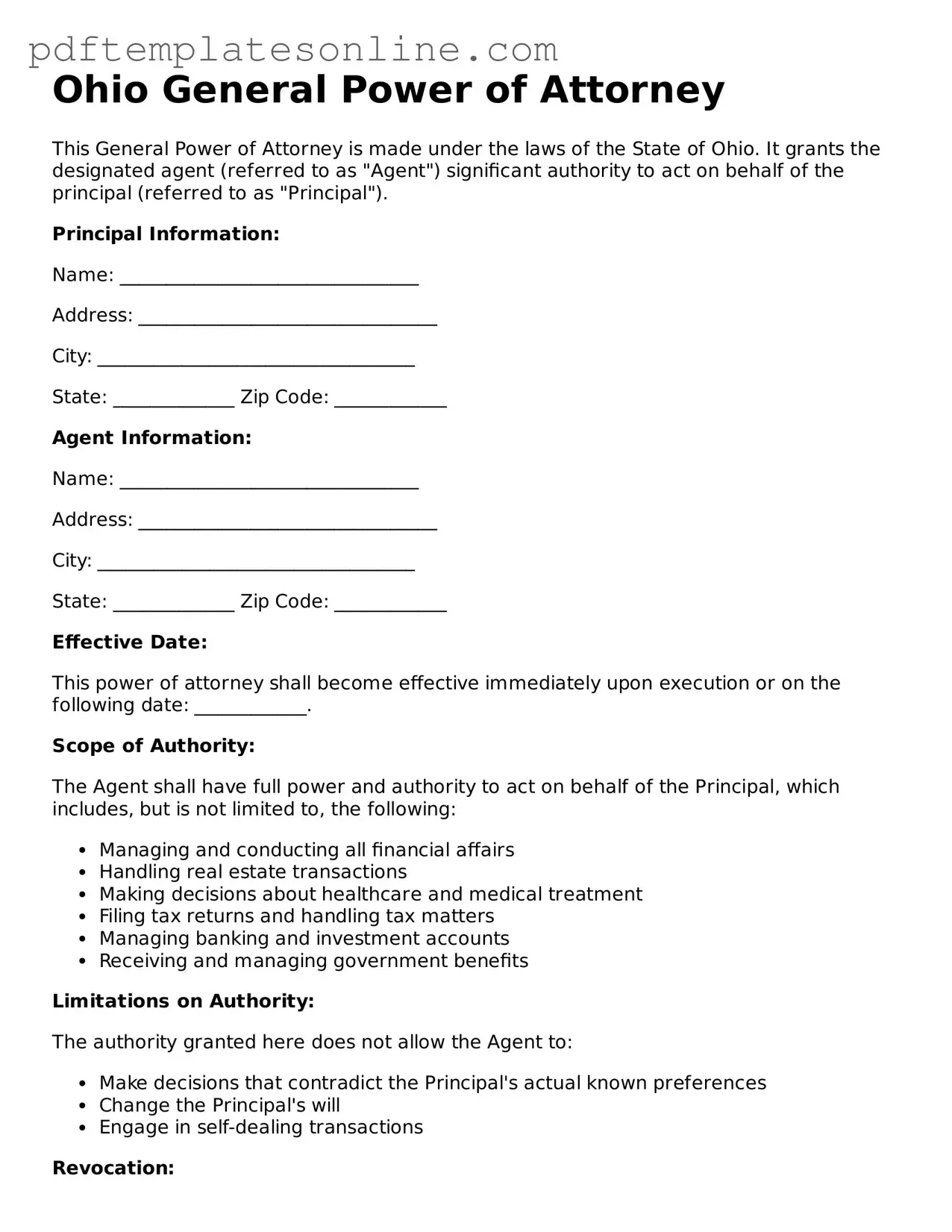Official Ohio General Power of Attorney Document
The Ohio General Power of Attorney form is a legal document that allows one person to grant another individual the authority to make decisions and act on their behalf. This form is especially useful for managing financial and legal matters when the principal is unable to do so themselves. Understanding its components and implications can help you make informed choices about your personal and financial affairs.
Access General Power of Attorney Editor Now
